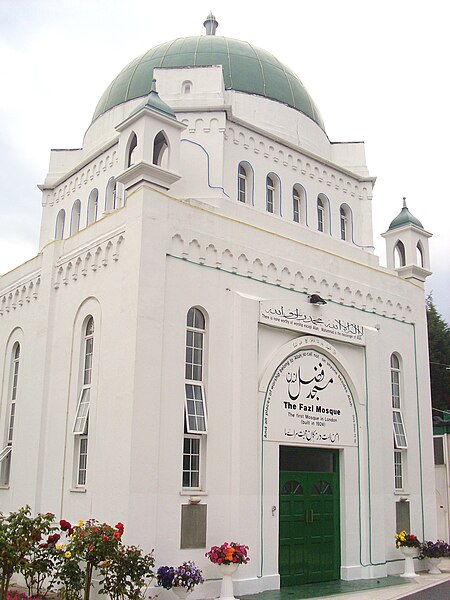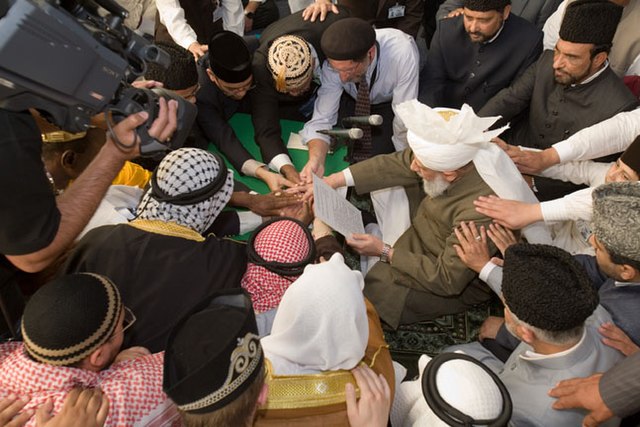Mirza Basheer-ud-Din Mahmood Ahmad
Mirza Basheer-ud-Din Mahmood Ahmad was the second caliph, leader of the worldwide Ahmadiyya Muslim Community and the eldest son of Mirza Ghulam Ahmad from his second wife, Nusrat Jahan Begum. He was elected as the second successor of Mirza Ghulam Ahmad on 14 March 1914 at the age of 25, the day after the death of his predecessor Hakim Nur-ud-Din.
Mirza Basheer-ud-Din Mahmood Ahmad
This photo was taken during Mirza Mahmood Ahmad's Tour of England in 1924. From right to left: Fazl ul-Rahman Hakim; Mirza Mahmood Ahmad and Abdul Rahim Nayyar. At the bottom, two West-Africans.
Mirza Mahmood Ahmad (seated center) with the scholars who accompanied him in his tour of the Middle East and Europe.
The Fazl Mosque in London, established in 1924
The Ahmadiyya Caliphate is a non-political caliphate established on May 27, 1908, following the death of Mirza Ghulam Ahmad, the founder of the Ahmadiyya Muslim Community, who claimed to be a Prophet, a Messenger, the promised Messiah and Mahdi, the expected redeemer awaited by Muslims. It is believed by Ahmadis to be the re-establishment of the Rashidun Caliphate that commenced following the death of the Islamic prophet Muhammad. The caliphs are entitled Khalīfatul Masīh, sometimes simply referred to as Khalifa. The caliph is the elected spiritual and organizational leader of the worldwide Ahmadiyya Muslim Community and is the successor of Ghulam Ahmad. He is believed by the Community to be divinely ordained and is also referred to by its members as Amir al-Mu'minin and Imam Jama'at. The 5th and current Caliph of the Messiah of the Ahmadiyya Community is Mirza Masroor Ahmad.
The 5th Caliph taking a pledge of allegiance from Ahmadis in 2008.
Image: Allama Nur ud Din
Image: Khalifatul Masih II
Image: Hazrat Mirza Nasir Ahmad Mash III (1967)







